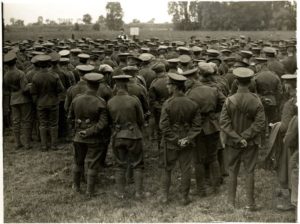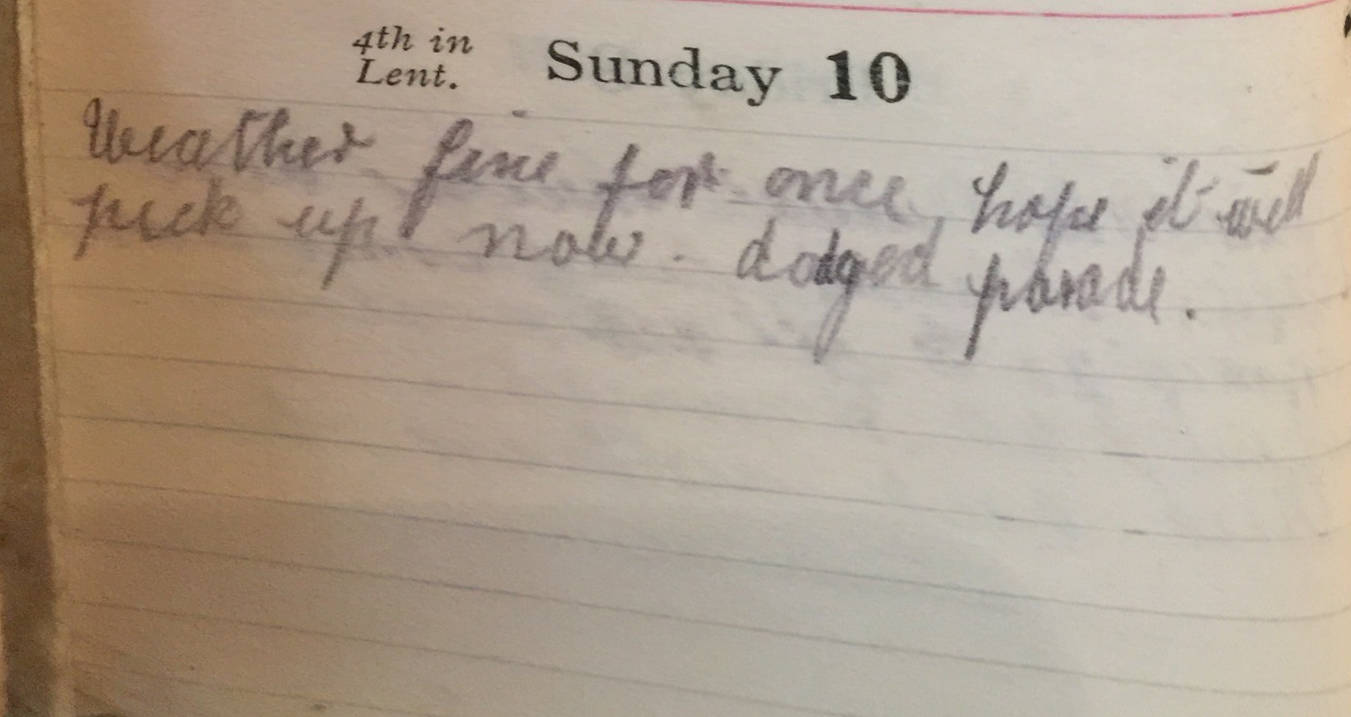Sunday March 10th, 1918
Weather fine for once. Hope it will pick up now. Dodged parade.
Church Parade
This is an interesting development. Frank seems to be dodging the ‘Church Parade’.

Most commentators on Salonika mention the incredibly changeable weather – sunny one minute and snowing the next. Perhaps Frank just wants to make the most of the sun, while it lasts. Or perhaps he was starting to think that religion and war were strange bedfellows. Some attempting to reconcile the two focus on the ‘sacrifice’ rather than the ‘violence’ of war but often struggled.
There were over 5,000 army chaplains in WWI ministering to the British and Commonwealth forces.¹ They were multi-denominational. Military chaplains conducted divine services and gave sermons to large groups of soldiers on Church Parade. They were treated as ‘officers’ in WWI and sometime criticized for the same distance from the men that other officers had. Many others supported troops in the heat of battle, turned a blind eye to ‘sinful’ cigarettes and booze, and provided general comfort. The Royal Army Chaplains’ Department received its ‘Royal’ prefix in 1919 in recognition for its service during WWI. Chaplains are recognized under the Geneva Convention as non-combatants, though this status was only formalized in 1977.²
Religion & War
When war broke out, Charles Edward Montague was a journalist at The Manchester Guardian. At 47 years old, he dyed his white hair black and went to war. Serving with distinction, at the war’s end he became one of its significant critics. He wrote ‘Disenchantment’ in 1922, a collection of his essays about the war. In one essay, ‘The Sheep that were not Fed’, he discussed the incompatibility of war and religion.
‘”I’ve been a Christian all my life, but this war is a bit too serious.” So saying, a certain New Army recruit had folded up his religion in 1914, and put it away, as it were, in a drawer with his other civil attire to wait until public affairs should again permit their use…. Any religion or anything else that seemed to chill, or deter, or suggest an alternative [to winning the war] need not be renounced. But it had to be put away in a drawer…. For he was a man more strongly disposed than most of his fellows to hold, if he honestly could, the tenets of some formal religion. “They got hold o’ something,’ he used to say with curiosity and some respect, of more regular practitioners than himself. ‘Look at the Salvation Army legging along in the mud and their eyes fair shining with happiness! Aye they got on to something.”‘³
Perhaps Frank was feeling a bit like this fellow?
13th (Service) Battalion War Diary – 10th March 1918 – No 1 Sector, Olasli
Church Parade (Full Attendance) at 10:30 hrs.
References & Further Reading
¹ ‘Army Chaplains in WWI‘, IWM
² ‘Military Chaplains‘, Wikipedia
³ ‘Disenchantment’ by Charles Edward Montague (1867-1928) pages 90-92
* photograph from collection of National Library of Scotland


